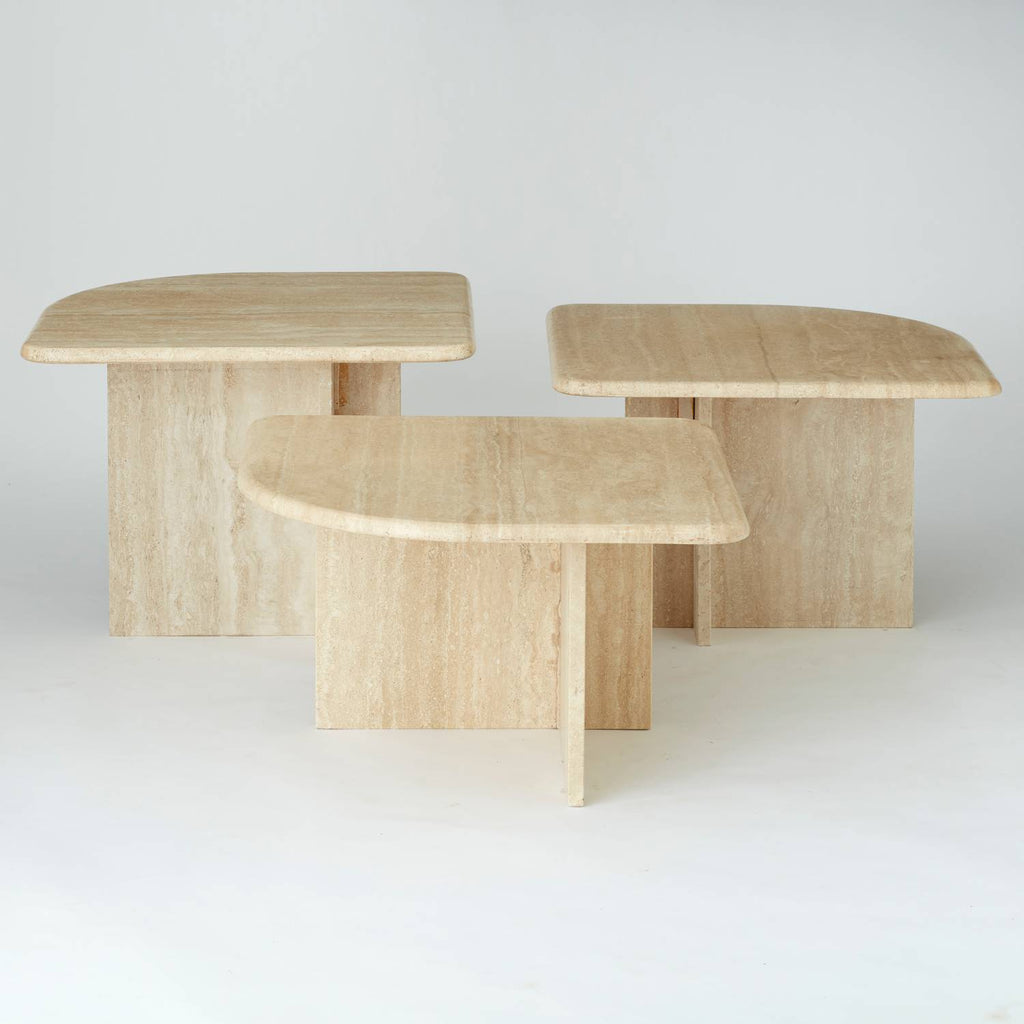Travertine Dream
Among AU’s carefully sourced collection of tables, there are those carved from marble and also, travertine. At first glance, the differences in the two stones may be barely discernible or even, noteworthy. But what exactly is travertine? How does it differ from marble and are we justified in thinking it deserves equal standing in our interior spaces?
What is travertine?
Being both natural and a type of limestone, travertine – just like marble - is a terrestrial, sedimentary rock. The key difference in the stones, however, is their formation. Although both come about as a result of limestone being placed under enormously high pressures and temperatures, travertine’s metamorphosis only takes place in geo-thermally heated springs or caves. A product of the precipitating deposits arising from carbonate minerals in ground and surface waters, travertine can be recognised by its honeycomb structure, the holes of which are due to carbon dioxide evasion during its seemingly alchemical creation.
Italian travertine
Renowned for viewing as artisanship those tasks often considered elsewhere in the world as merely rough, manual labour, Italy has long perfected the exquisite craftsmanship necessary to work with travertine and the unrivalled ability to transform it into elegant, sophisticated pieces of art. Thousands of years ago, the Romans used it in their general construction and it can still be admired in many famous monuments today, the colonnade of St. Peter’s Square in Rome being one such well-known example.

Cream Travertine Pyramid Coffee Table
This combination of a centuries-old legacy and revered workmanship means that still today, travertine of the very best quality originates from Italy. Indeed, until the 1980s, the country’s quarries were known as being the only real source for the stone. These days, it is possible to obtain travertine from all over the world; Turkey, Iran and Mexico are just a few of the countries that export it. Although much of this travertine is also remarkable, unlike marble, it is not sold from the quarry out of which it was mined, so it can be difficult to ascertain its actual quality before setting eyes on it. Consequently, obtaining Italian travertine – always consistently exceptional - has become even costlier than buying marble.

Vintage 1970's Italian Travertine Console
Interior Styling and travertine
Coming as it does in a multitude of calm, muted shades including ivory, cream and beige, travertine provides interior stylists with a palette full of true neutrals. But, depending on the amount of iron or other organic impurities found in the original limestone, travertine can also take on many hues ranging from walnut through to gold and a myriad of purples, oranges and reds.

Italian Travertine Leaf Shaped Coffee Table
Just like marble, travertine is worthy of that rare accolade of being both highly aesthetic and undeniably functional. Long beloved in interiors because of this simultaneous beauty and versatility, the stone is frequently employed as flooring and wall tiles or simply admired as a sculptural object in its own right. Able to be polished to a smooth finish or honed to be matte, it can even be chiselled or brushed so as to be uneven or rough and all without any of its natural magnificence being diminished.
Providing instant texture whilst remaining a true neutral, its elegance can be structured yet abidingly simple. With their timeless quality and an appeal that transcends interior design trends both travertine and marble have the ability to transform and unite in equal measure. Being natural, organic stones means that each and every piece is unique. It is futile to compare the two: far better to delight in using both. Browse through AU’s collection of travertine and marble tables here.
Continue reading

